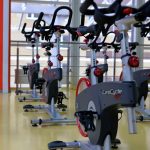Magnets Used in Gyms to Operate Exercise Equipment
Do you own a gym? Are you thinking about buying one? Maybe you just want to upgrade your own home gym. In any case, you are probably looking for specific exercise equipment to fill your space. What you might not realize is that one of the many choices you’ll have to make is whether or not to use magnetic resistance equipment in your bikes and treadmills.
Resistance Training and Stationary Bikes
Without resistance, you won’t get the same caliber of workout. While less expensive stationary bikes allow you to add resistance with a tension belt, magnetism is a more lasting method. Not only can magnets be used to add resistance, but they can also track revolutions and convert the information into distance traveled. Typically, you’ll find magnetic resistance bikes in most spin studios and even in the ever-popular Peloton.
Here’s how it works — a flywheel is linked to the magnet, and the level of resistance is controlled by an Eddy current. When you turn a dial or press a button to increase resistance, you increase the electrical current. More current equals stronger magnetic force, increasing resistance in the flywheel and requiring you to pedal harder. The closer the magnet is to the flywheel, the more resistance. The farther away, the less resistance.
This same technology allows riders to follow pre-programmed routes. A computer inside the bike adjusts the electric current automatically, changing resistance to correlate with whether you’re biking up virtual hills or down them.
Magnetic Motorless Treadmills: A Money-saver?
There are three types of treadmills — motorized, hydraulic, and magnetic. The former two are initially powered by a forward movement to roll the belt forward. A motor treadmill forces you to keep a certain pace, whereas magnetic and hydraulic treadmills are dependent on your movement.
Magnetic treadmills are motorless and, like the equipment discussed above, they create resistance with electric currents and magnetic force. By increasing or decreasing magnetic pull, you create a more or less challenging workout.
Most magnetic treadmills are inclined slightly to make it easier for the runner to get momentum. Some people prefer them because they’re more environmentally friendly in that they don’t produce require electricity to operate. If you’re a business owner, that saves you money. Plus, they’re smaller and easier to transport and store.
A Few Extras: Magnetic Dumbbells and Weight Pins
If you’re looking to stock your gym with innovative equipment, consider some of the new technology only just appearing on the market. For example, thanks to magnets, two one-pound bracelets can give you the same workout as a 50-pound barbell. A group of Korean graduate students came up with the idea, substituting weight racks with an electromagnetic force.
Users can increase or decrease the resistance between the bracelets by adjusting a dial. Then, by switching the polarity of the electromagnets embedded within the units, users can switch between concentric and eccentric muscle movements.
You may also see magnets used in weight pins. Let’s say you’re doing leg curls and want to increase the weight from 30 to 45 pounds. The pin, embedded with a permanent magnet (most likely neodymium) will click into place, making the process of changing weights safer, easier, and more satisfying.
How to Use Apex Magnets in Your Gym
To make your clients’ lives easier when they come to the gym for a good workout, you might consider using our neodymium hook magnets as a place for them to hang their bags, towels, bands, and jump ropes. You can attach them to any ferromagnetic surface like the steel studs sometimes found behind a wall.
Essentially, magnetic gym equipment can help you save money, add convenience, and solidify your business's name as an innovator. If you have a question or an idea you’d like to talk through with one of our knowledgeable representatives, reach out at any time.

